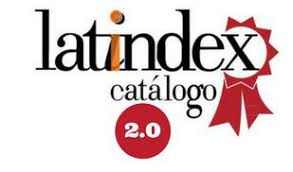Prueba de micronúcleos en células bucales. Una revisión
DOI:
https://doi.org/10.31984/oactiva.v7i1.728Palabras clave:
Micronúcleos, Mucosa bucal, Pruebas de mutagenicidad, ADNResumen
La prueba de micronúcleos se ha convertido en el método más utilizado para evaluar la genotoxicidad de diferentes factores biológicos, físicos y químicos, convirtiéndose poco a poco en un reconocido marcador de daño en el ADN para el biomonitoreo de diversas entidades sistémicas. Esta revisión está enfocada principalmente en la prueba de micronúcleos en células bucales, considerado en la actualidad como una prueba prometedora para ser utilizada como biomarcador de eventos patológicos, por las características que presenta al no ser invasiva, tolerada por lo pacientes y no requerir de una infraestructura compleja, como equipos de cultivo tisular, para llevarla a cabo. Como se sabe el fundamento de esta prueba es la detección de los micronúcleos, los cuales se originan a partir de cromosomas completos o fragmento de cromosomas que fueron rezagados por genotoxinas durante la mitosis.
Palabras clave. Micronúcleos, Mucosa bucal, Pruebas de mutagenicidad, ADN.
Descargas
Citas
2. Friedberg E, McDaniel L, Schultz R. The role of endogenous and exogenous DNA damage and mutagenesis. Curr Opin Genet Dev 2004; 14: 5–10.
3. Kang S, Kwon J, Lee J. Recent advances in in vivo genotoxicity testing: prediction of carcinogenic potential using comet and micronucleus assay in animal models. J Cancer Prev 2013; 18: 277–288.
4. Turkez H, Arslan M, Ozdemir O. Genotoxicity testing: progress and prospects for the next decade. Expert Opin Drug Metab Toxicol 2017; 13: 1089–1098.
5. Sv R, Rajendra S. Genotoxicity: Mechanisms, Testing Guidelines and Methods. Global Journal of Pharmacy & Pharmaceutical Sciences; 1. Epub ahead of print 2017.
6. Sears D, Udden M. Howell-Jolly bodies: a brief historical review. Am J Med Sci 2012; 343: 407-409.
7. Bain B. Prominent Howell-Jolly bodies when megaloblastic anemia develops in a hyposplenic patient. Am J Hematol 2014; 89: 852.
8. Hayashi M, Tice R, MacGregor J. In vivo rodent erythrocyte micronucleus assay. Mutat Res 1994; 312: 293-304.
9. Fenech M. The in vitro micronucleus technique. Mutation Research/Fundamental and Molecular Mechanisms of Mutagenesis 2000; 455: 81–95.
10. Fenech M. Cytokinesis-block micronucleus cytome assay. Nat Protoc 2007; 2: 1084–1104.
11. Thomas P, Hecker J, Faunt J. Buccal micronucleus cytome biomarkers may be associated with Alzheimer’s disease. Mutagenesis 2007; 22: 371–379.
12. Sarto F, Tomanin R, Giacomelli L. The micronucleus assay in human exfoliated cells of the nose and mouth: application to occupational exposures to chromic acid and ethylene oxide. Mutat Res 1990; 244: 345–351.
13. Stich H, Curtis J, Parida B. Application of the micronucleus test to exfoliated cells of high cancer risk groups: tobacco chewers. Int J Cancer 1982; 30: 553–559.
14. Moore L, Warner M, Smith A. Use of the fluorescent micronucleus assay to detect the genotoxic effects of radiation and arsenic exposure in exfoliated human epithelial cells. Environ Mol Mutagen 1996; 27: 176–184.
15. Squier C, Brogden K. Human Oral Mucosa: Development, Structure and Function. John Wiley & Sons, 2010.
16. Sabharwal R, Verma P, Syed MA, et al. Emergence of micronuclei as a genomic biomarker. Indian J Med Paediatr Oncol 2015; 36: 212–218.
17. Tolbert P, Shy C, Allen J. Micronuclei and other nuclear anomalies in buccal smears: methods development. Mutat Res 1992; 271: 69–77.
18. Fenech M, Kirsch-Volders M, Natarajan A. Molecular mechanisms of micronucleus, nucleoplasmic bridge and nuclear bud formation in mammalian and human cells. Mutagenesis 2011; 26: 125–132.
19. Xanthopoulou L, Delhanty J, Mania A. The nature and origin of binucleate cells in human preimplantation embryos: relevance to placental mesenchymal dysplasia. Reprod Biomed Online 2011; 22: 362–370.
20. Kiraly G, Simonyi A, Turani M. Micronucleus formation during chromatin condensation and under apoptotic conditions. Apoptosis 2017; 22: 207–219.
21. Teshiba R, Kawano S, Wang L. Age-dependent prognostic effect by Mitosis-Karyorrhexis Index in neuroblastoma: a report from the Children’s Oncology Group. Pediatr Dev Pathol 2014; 17: 441–449.
22. Naga M, Gour S, Nallagutta N. Buccal Micronucleus Cytome Assay in Sickle Cell Disease. J Clin Diagn Res 2016; 10: ZC62–4.
23. Fink S, Cookson B. Apoptosis, pyroptosis, and necrosis: mechanistic description of dead and dying eukaryotic cells. Infect Immun 2005; 73: 1907–1916.
24. Martínez-Pérez LM, Cerda-Flores RM, Gallegos-Cabriales EC, et al. Frequency of micronuclei in Mexicans with type 2 diabetes mellitus. Prague Med Rep 2007; 108: 248–255.
25. Rosefort C, Fauth E, Zankl H. Micronuclei induced by aneugens and clastogens in mononucleate and binucleate cells using the cytokinesis block assay. Mutagenesis 2004; 19: 277–284.
26. Fenech M, Knasmueller S, Bolognesi C. Micronuclei as biomarkers of DNA damage, aneuploidy, inducers of chromosomal hypermutation and as sources of pro-inflammatory DNA in humans. Mutat Res - Rev Mut Res 2020; 786: 108342.
27. Fenech M. Cytokinesis-Block Micronucleus Cytome Assay Evolution into a More Comprehensive Method to Measure Chromosomal Instability. Genes ; 11. 2020.
28. Oecd, OECD. Test No. 474: Mammalian Erythrocyte Micronucleus Test. 2014.
29. Nersesyan A, Kundi M, Fenech M. Micronucleus assay with urine derived cells (UDC): a review of its application in human studies investigating genotoxin exposure and bladder cancer risk. Mutat Res - Rev Mut Res 2014; 762: 37–51.
30. Bolognesi C, Knasmueller S, Nersesyan A. Inter-laboratory consistency and variability in the buccal micronucleus cytome assay depends on biomarker scored and laboratory experience: results from the HUMNxl international inter-laboratory scoring exercise. Mutagenesis 2017; 32: 257–266.
31. Fenech M, Holland N, Zeiger E. The HUMN and HUMNxL international collaboration projects on human micronucleus assays in lymphocytes and buccal cells--past, present and future. Mutagenesis 2011; 26: 239–245.
32. Rosin MP, German J. Evidence for chromosome instability in vivo in Bloom syndrome: increased numbers of micronuclei in exfoliated cells. Hum Genet 1985; 71: 187–191.
33. Thomas P, Fenech M. Buccal micronucleus cytome assay. Methods Mol Biol 2011; 682: 235–248.
34. Ursini C, Di Basilio M, Ciervo A. Biomonitoring of workers employed in a titanium dioxide production plant: Use of buccal micronucleus cytome assay as noninvasive biomarker to evaluate genotoxic and cytotoxic effects. Environ Mol Mutagen 2021; 62: 242–251.
35. Gusterson B, Eaves C. Basal-like Breast Cancers: From Pathology to Biology and Back Again. Stem Cell Reports 2018; 10: 1676–1686.
36. Elmore S. Apoptosis: a review of programmed cell death. Toxicol Pathol 2007; 35: 495–516.
37. Stich H, San R, Rosin M. Adaptation of the DNA-repair and micronucleus tests to human cell suspensions and exfoliated cells. Ann N Y Acad Sci 1983; 407: 93–105.
38. Sarto F, Finotto S, Giacomelli L. The micronucleus assay in exfoliated cells of the human buccal mucosa. Mutagenesis 1987; 2: 11–17.
39. Tolbert P, Shy C, Allen J. Micronuclei and Other Nuclear Anomalies in Buccal Smears: A Field Test in Snuff Users. American Journal of Epidemiology 1991; 134: 840–850.
40. Fenech M, Bolognesi C, Kirsch-Volders M. Harmonisation of the micronucleus assay in human buccal cells--a Human Micronucleus (HUMN) project (www.humn.org) initiative commencing in 2007. Mutagenesis 2007; 22: 3–4.
41. Zuniga-González G, Batista-González C, Gómez-Meda B. Micronuclei in diabetes: Folate supplementation diminishes micronuclei in diabetic patients but not in an animal model. Mutation Research/Genetic Toxicology and Environmental Mutagenesis 2007; 634: 126–134.
42. Shaik N, Shaik J, Ali S. Increased frequency of micronuclei in diabetes mellitus patients using pioglitazone and glimepiride in combination. Food Chem Toxicol 2010; 48: 3432–3435.
43. Bharathi S, Gheena. Micronuclei in Diabetics and Smokers. J Adv Pharm Technol Res 2015; 8: 1173.
44. Gómez-Meda B, Zamora A, Muñoz T. Nuclear abnormalities in buccal mucosa cells of patients with type I and II diabetes treated with folic acid. Mutat Res Genet Toxicol Environ Mutagen 2016; 797: 1–8.
45. Rathod S, Raj A, Jadhav P. Assessment of cytogenic damage in chronic periodontitis and type 2 diabetes mellitus subjects through micronucleus test. Saudi J Oral Sci 2016; 3: 75.
46. Biswas P, Ramakrishna M, Banerjee N. Micronuclei in exfoliated buccal cells: a biomarker for dna damage leading to progression of late diabetic complications in type 2 diabetes mellitus patients. Int J Curr Adv Res 2017; 6: 2366–2371.
47. Ojeda J, Aguilar M, Olimón V. Increased Micronuclei Frequency in Oral and Lingual Epithelium of Treated Diabetes Mellitus Patients. BioMed Research International 2018; 2018: 1–8.
48. Gupta A, Ahmed J, Shenoy N. Buccal Smear: A Promising Tool in the Diagnosis of Diabetes Mellitus. Trav Hum 2018; 1: 1675–1680.
Descargas
Publicado
- Resumen 1588
- DESCARGAR EN PDF 1090
- HTML 298
Cómo citar
Número
Sección
Licencia
Derechos de autor 2022 Odontología Activa Revista Científica

Esta obra está bajo una licencia internacional Creative Commons Atribución-NoComercial-CompartirIgual 4.0.
Se autoriza la reproducción total y parcial, y la citación del material que aparece en la revista, siempre y cuando se indique de manera explícita: nombre de la revista, nombre del autor(es), año, volumen, número y páginas del artículo fuente. Las ideas y afirmaciones consignadas por los autores están bajo su responsabilidad y no interpretan necesariamente las opiniones y políticas del Consejo Editorial de la Revista OActiva ni de la Universidad Católica de Cuenca.
La Revista OActiva utiliza la Licencia Creative Commons de Reconocimeinto-NoComercial-CompartirIgual 4.0, que es la siguiente: CC BY-NC-SA 4.0 Internacional.











